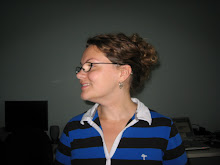One of the many things that people seem to be amateurishly fascinated with decrying is "artificial" food additives, preservatives, colors, flavors, etc. In the U.S. colors are often specified in the form of "D&C Red #40" or "D&C Yellow #2". Preservatives and other additives are usually spelled out in all their chemical glory -- monosodium glutamate, thiamin monoitrate, etc.
If you read the ingredients on a product in Sweden, these additives are listed with E-numbers. I'm not sure what the E stands for, although the best guess is always Europe or European, as many standards are today set on that level. People love to hate the E-numbers. Look at all the artificial crap in the food we eat! There's an E-something in almost everything in my cupboard. No wonder we're all fat and sick!
Now, I'm not saying I was ever on this bandwagon, and in fact I mostly figured that people who don't like "all these E-ämnen" could start eating some fresh fruit and vegetables and stop bitching, so don't get the impression that I had a life-changing revelation while looking at my marmelade this morning. But it definitely gave me a quandry. I noticed that there were two E-additivess in my red onion cumberland: E162 and E440. In the Swedish ingredients, that is. But right after Swedish, the ingredients were listed in German or Dutch, and there were no E-numbers listed at all. In their place I read bietenrood and pektin. When I looked up E162 and E440 at Livsmedelverket's website, I saw that my super German-or-Dutch sleuthing skills did not fail me -- E162 is juice from red beets and E440 is pectin.
So, if I understand correctly the urgings of all the people who decry the E-additives (all while happily eating Cheet-os and Billy's pizza and such), I'm supposed to be upset about my food containing beetroot juice and a natural extract from fruit that our great-grannies used to thicken their homemade jams?
Okay, so one part of this doesn't shock me. That is, the fact that people out there might complain about how many "artificial" additives there are in their food while all the while continuing to eat all of it, that doesn't shock me. Especially in this country, where so many are more likely to see it as the government's responsibility to pass laws (all problems are solved by passing laws) that require food companies to stop using additives, rather than seeing it as their own responsibility to choose foods without these additives if they're so keen on not taking them in. It doesn't surprise me, either, that most of them are unaware that many of these E-additives can also be found naturally in a banana or a glass of tap water. I also get that some of these E-additives sound very scary. Looking at the list, I see that E513 is svavelsyra (sulfuric acid). I guess surströmming has to be made out of something...
No, what does surprise me is that they are written this way in the ingredients. I understand why a bag of Cheet-os in the U.S. lists riboflavin and thiamin monoitrate in the ingredients instead of vitamins B1 and B2. We thank those regulations that keep laymen from thinking, "Awesome, Cheet-os have vitamins!" and instead list such nutrition facts in their own little box. However, I cannot for the life of me understand why it is better for the consumer to write E162 instead of beetroot juice. Wouldn't we want people to know that what they're eating is actually made from stuff that grows out of the ground? Or do we want to force vegetarians or people with this or that allergy to look up and memorize which E-codes go along with foods they shouldn't eat? What's worse, the E-code isn't always legally required, but can be replaced by the "function name" of the additives. Instead of writing E440, for instead, it's acceptable to write förtjockningsmedel (thickener). But again, if I'm a vegetarian, I would very much appreciate knowing if that thickener is gelatin or pectin, wouldn't I? Or in my case, sötningsmedel (sweetener) is a thought-provoker, as I get migraines from aspartame but not from other artificial sweeteners. At least if they wrote E951 I would learn to recognize it, by why not just write aspartame?
It just all strikes me as ridiculous given that ingredients are listed on food products for the purpose of keeping the consumer informed, probably prompted by such things as allergies or moral convictions or the like, the exact kinds of goals that make the ingredients list pointless if it is obfuscated with a bunch of numbers and vague category names that all mean wink wink, nudge nudge, we squeezed a beet into your jam.
Now if you'll excuse me, I've got to pack up and head to Karlstad, where I will be participating in the ritual intake of cambaridae and the acidified and coagulated results of a bacterial process performed on bovine lactate, but choosing not to join in the imbibing of distilled grain extract.
Meat Filled Saturday
12 years ago

No comments:
Post a Comment